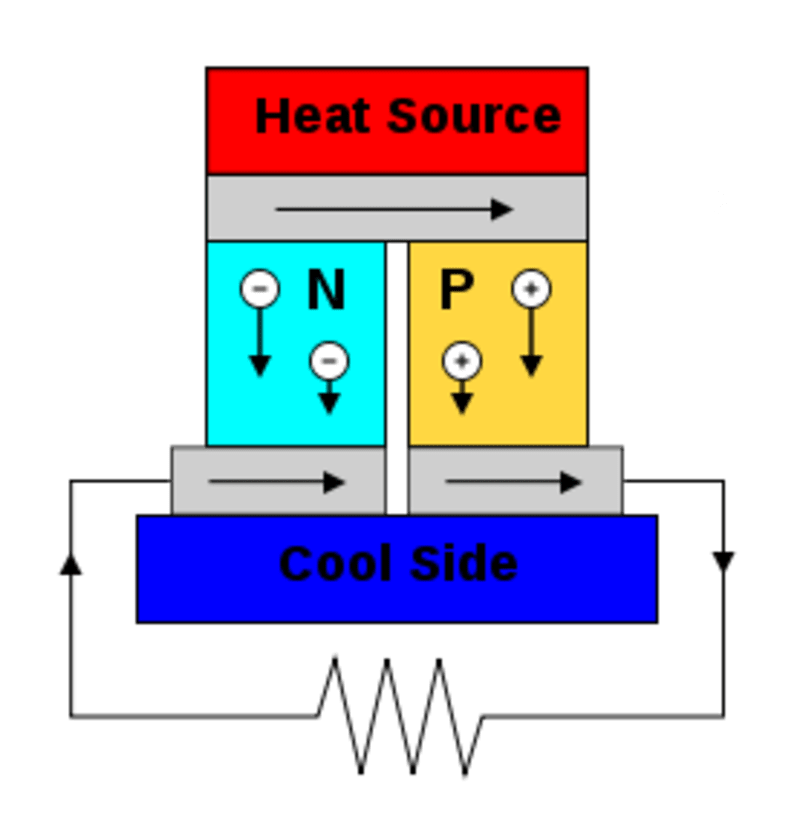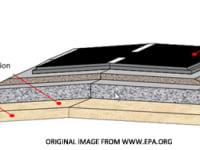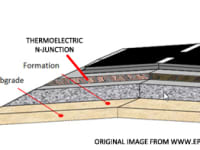Modifying the existing roadways to create electricity from the sun has many advantages and has been explored in some detail. After all, if the huge surface area of roads could be utilized there would be a massive amount of power available produced by the sun.
Unfortunately, many times these designs change the structure of the road. Trying to create a robust yet transparent housing for photovoltaic cells can be difficult, especially with car exhaust adding to the opacity of the road. Additionally, the lack of asphalt can create a slicker surface and influence vehicle behavior.
Thermoelectric power generation has been used in the space industry for years as a way to create solid state electrical power from a temperature difference. These devices use two different materials placed between a hot and cold source. The electrons in the two materials are pushed away from the hot side, due to the Seebeck effect. Because the materials are different, the number of electrons reaching the cold side is different between them. This difference creates a voltage which can be used to generate power. Thermoelectric systems often have an efficiency of 6-8%, have no moving parts, are very robust, and work for decades.
The surface of roads can reach temperatures of 50-60 C, while the ground beneath them remains as a near constant 10-16 C. This temperature difference can drive a thermoelectric generator to create electrical power. Oxide based thermoelectric materials can be placed underneath the top layer of the road, thus leaving the road virtually untouched. The asphalt will still continue to provide proper traction and handling capabilities, and the compressed oxide layers will provide the normal structural support of the road.
The ~50 degree temperature difference is bound to decrease the operational efficiency of the road from its normal 6-8%. With the oxide based materials and reduced temperature, it is predicted that efficiencies will drop to roughly 0.3-0.5%. However, because there is so much usable area in the roadways it is not necessary to keep conversion efficiency high. There are over 31,000 square miles of road area available, and if all that area was used in this manner over 240 Gigawatts of electrical power could be produced. Because the inclusion would be unnoticeable, the roads would remain the same as before but with the added benefit of producing power.
Like this entry?
-
About the Entrant
- Name:Troy Howe
- Type of entry:individual
- Patent status:none








